Shandong Fengtu IOT Technology Co., Ltd
Sales Manager:Ms. Emily Wang
Cel,Whatsapp,Wechat:+86 15898932201
Email:info@fengtutec.com
Add:No. 155 Optoelectronic Industry Accelerator, Gaoxin District, Weifang, Shandong, China

Sales Manager:Ms. Emily Wang
Cel,Whatsapp,Wechat:+86 15898932201
Email:info@fengtutec.com
Add:No. 155 Optoelectronic Industry Accelerator, Gaoxin District, Weifang, Shandong, China
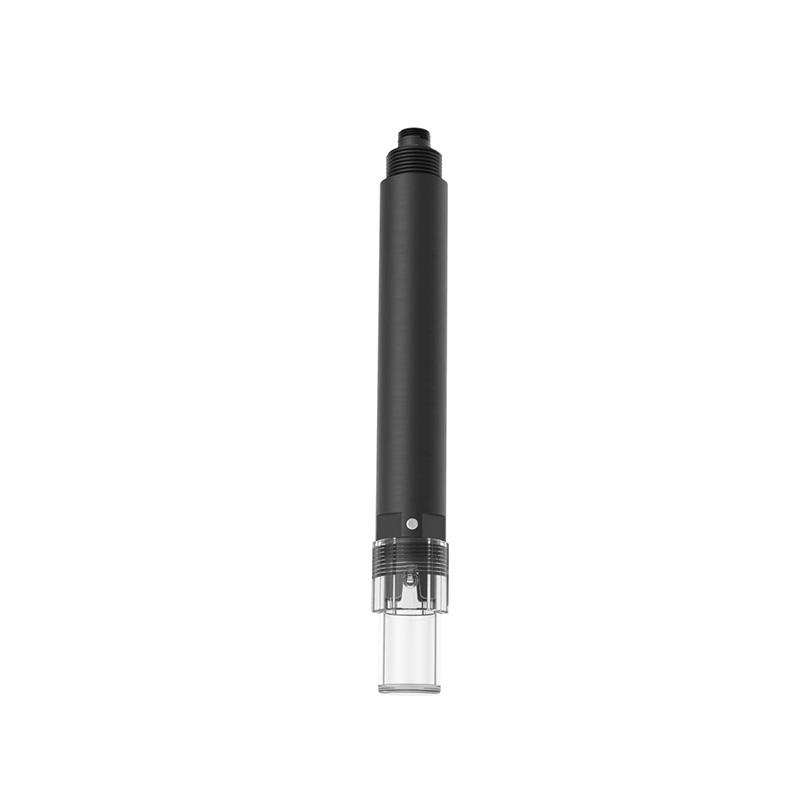
Model:TP485
Brand:fengtu
one.soil pH test application environment instructions
soil pH test is a soil pH transmitter developed by our company.The transmitter has high accuracy, fast response, stable output, and is suitable for various soil types.It can be buried in the soil for a long time, is resistant to long-term electrolysis, corrosion resistance, vacuum potting, and is completely waterproof.
It can be widely used in the detection of soil pH, pH measurement in precision agriculture, forestry, geological exploration, plant cultivation, water conservancy, environmental protection and other fields.
It can be buried in the soil for long-term dynamic testing.
Stable performance and long service life
IP68 waterproof standard
two.soil pH test technical performance and specifications
1.Technical parameters
| Measurement principle | Electrochemistry (Salt Bridge) |
| Signal mode | RS485 (MODBUS-RTU) |
| Measuring range | 0~14.00(PH) |
| Measurement resolution | 0.01 |
| Measurement accuracy | ±0.1PH, ±0.1℃ |
| response time | About 10s (98% flowing liquid) about 15s (98% still liquid) |
| Shell material | ABS |
| temperature compensation | Automatic temperature compensation |
| Cable length | Standard 5 meters |
| Supply voltage | 12-24VDC (0.4W@12V) |
| Measurement environment | Temperature 0~50℃ (non-freezing), <0.2MPa |
| Waterproof level | IP68 |
| Installation method | Submerged installation, soft soil and mud |
2.soil pH test dimension chart

The sensor connector is M12 aviation plug connector 5-pin female seat
three.soil pH test installation
Installation method
Step 1: Use a soil drill to drill holes at the appropriate location
1.Place the 20mm diameter soil drill vertically on the ground, hold the handle with both hands and press down clockwise to turn it slowly.(Note: Don’t use too much force, and be sure to turn it slowly and several times to prevent the drill bit from wandering and causing the hole to become crooked)
2.Take out the soil auger from the hole and put it into a bucket.Collect the soil in the soil auger into the bucket for the next step and mud.
3.Repeat the above-mentioned drilling and soil removal, and during this process, try to gently put the sensor into the hole (do not touch the device to the bottom with force) to test whether the depth of the hole is appropriate; if there is any lag, Use a soil drill to make corrections to ensure that the sensor is put in and taken out smoothly; until the hole depth is flush with the installation position marked by the sensor, the drilling is completed.
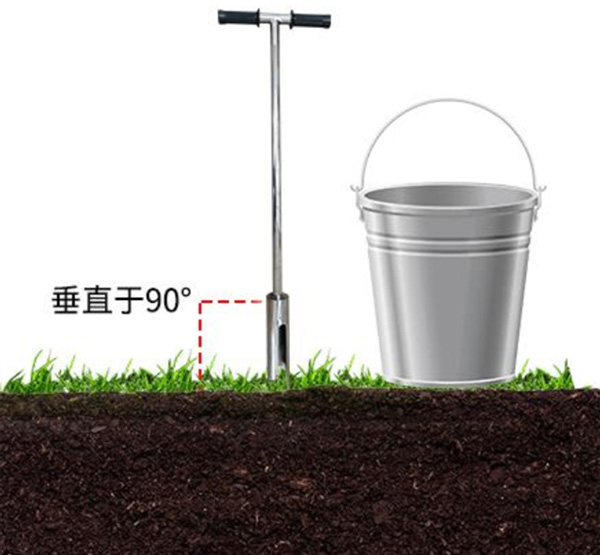
Step Two: Make the Slurry
1.Pick out impurities in the soil, such as stones, grass roots, and hard-to-dissolve soil clods.Grind the soil finely to mix it with the mud.2.Pour in an appropriate amount of water and stir thoroughly until it becomes viscous; loam mud should generally not be thicker than "tahini"; and the mud is complete.
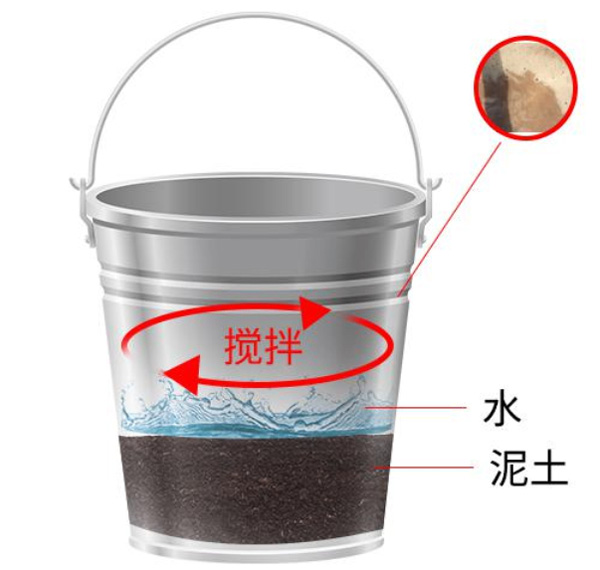
Step Three: Grouting Installation
1.Slowly pour the mud into the hole to about 1/2 of the hole; it can be increased or decreased according to the actual situation.
2.Slowly put the sensor into the hole, slowly turn it in one direction and press down.If the speed is too fast, the air bubbles may not be completely discharged.(Note: Do not pull up the sensor while turning and pressing down to prevent gas from being sucked into the hole again)
3.After the sensor is installed to the correct depth (the zero scale line is flush with the ground), some mud will overflow around the equipment and the grouting is completed.(Note: Remove excess mud beyond 3CM around the sensor to prevent clumping and affecting water penetration)

Step 4: Installation completed
After connecting the power cord and 485 communication line of the equipment, data collection can be carried out 1 hour later.
1.Key points for sand installation
The standard installation steps for sandy soil are the same as those for loam soil.It should be noted that sufficient water needs to be prepared.Before grouting, pour water into the hole and wet the entire wall until excess water appears at the bottom of the hole.Then follow the steps and slowly pour the mud into the hole, probably to 1/2 of the hole.The rest of the installation steps can refer to the installation of loam.
2.Key points for clay installation
When installing the clay, after drilling holes to collect the soil, and cleaning the impurities, soak the clay in water for more than 2 hours to soften the clay and make it easier to form a more uniform mud.After soaking, stir until it becomes thick and ready for grouting.The rest of the installation steps can refer to the installation of loam.
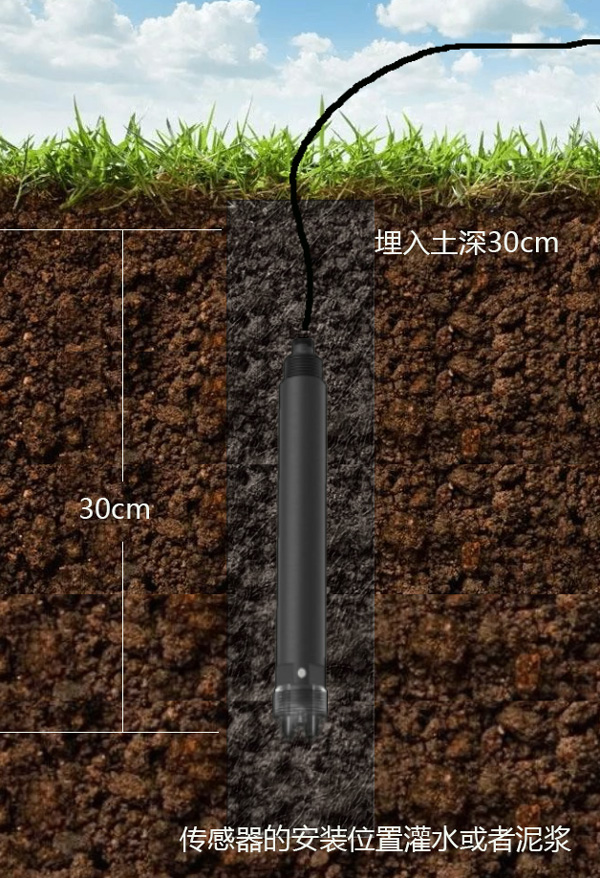
2.Electrical installation
The cable is a 4-core shielded wire, wire sequence definition: red - power cord (12~24VDC)
Blue - Ground (GND)
Green-485B Yellow-485A
The wiring sequence should be carefully checked before powering on to avoid unnecessary losses caused by wiring errors.Note: The color of the cable may vary slightly due to different production batches, please refer to the silk screen printing of the cable.
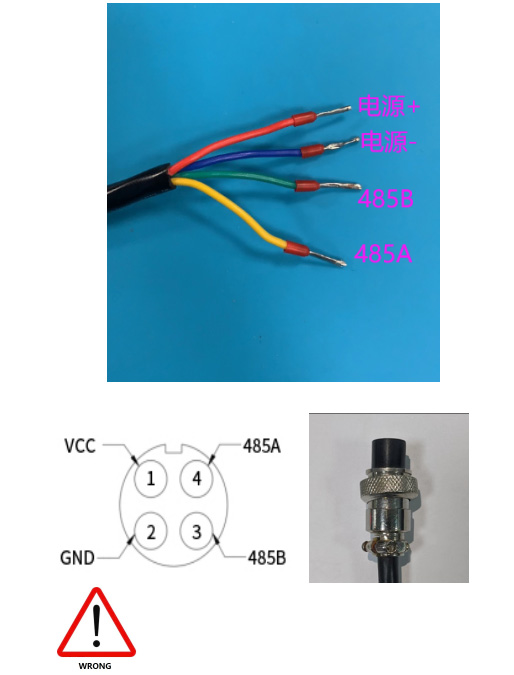
Incorrect wiring may cause permanent damage to the equipment
Four.soil pH test maintenance and care
1.Use and maintenance
When used for the first time or not used again for a long time, the sensitive bulb and reference junction should be immersed in 3.3mol/L KCI solution for more than 2 hours.
Before use, it should be washed and dried with deionized water (or distilled water) to prevent impurities from being brought into the liquid being measured.1/3 of the sensor should be inserted into the liquid being measured.
The wiring terminal part should be kept clean and dry.The sensor should be cleaned when not in use and inserted into a protective sleeve with 3.3mol/L KCI solution, or the sensor should be inserted into a container with 3.3mol/L KCI solution.
Check whether the wiring terminals are dry.If there are stains, please wipe them with absolute alcohol and dry them before continuing to use them.The sensor should avoid being immersed in deionized water, protein solution, strong acid and alkali solution, and acidic fluoride solution for a long time, and prevent contact with silicone grease.If the sensor has been used for a long time, its glass film may become translucent or have sediments attached.In this case, it can be washed with dilute hydrochloric acid and rinsed with water.
When the sensor has been used for a long time and measurement errors occur, it can be calibrated and corrected by cooperating with the instrument.If the sensor cannot be calibrated and measured after maintenance and maintenance in the above methods, it means that the sensor has failed.Please replace the sensor.
In ecologically beautiful areas, such as forests, mountain streams, rivers, lakes, seas, and around waterfalls, people often feel that the air is particularly fresh. This is mainly due to the relatively high content of negative oxygen ions in the air in these places. Negative oxygen ions are oxygen...
Visibility data is crucial for the safe conduct of various activities, and the Environment Visibility Sensor is the "hardcore player" that can shoulder this responsibility.In terms of protection, its housing is made of high-quality aluminum material, treated with anodizing and painting, fu...
Traditional weather stations are often large, fixed facilities established within standardized observation fields. They provide highly accurate data but come with high construction costs, long implementation cycles, and fixed locations. However, for field scientific expeditions, on-site rescue durin...
In the audit of highway construction projects, the construction quality and operational status of highway projects have always been the top priorities of inspection. Traditional audit inspection methods, such as drilling and coring inspection, have many drawbacks that cannot be ignored. The inspecti...